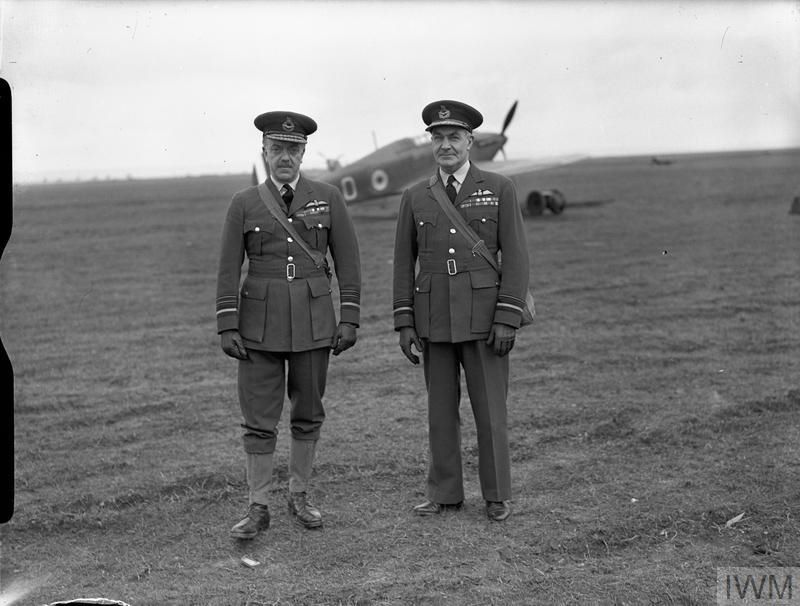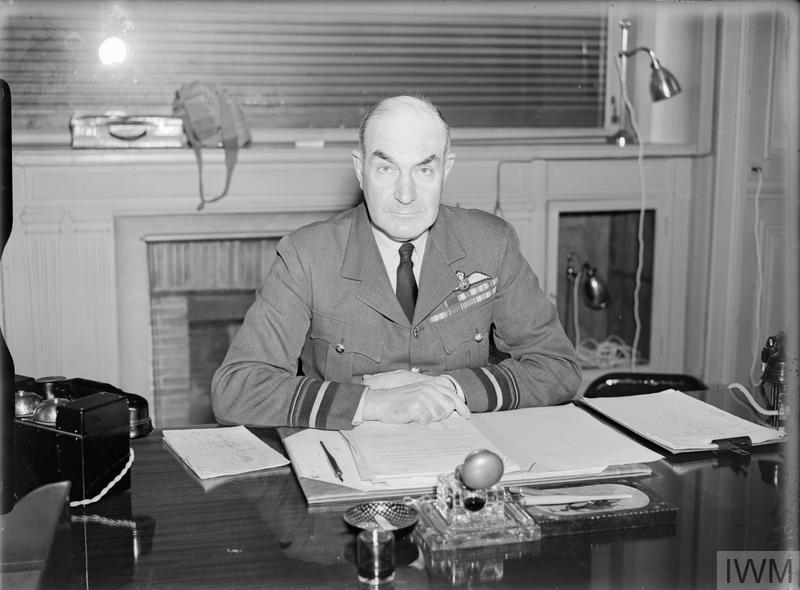Patrick Playfair (1889-1974)
Introduction
Some of the Royal Air Force commanders from the Second World War are well known because of the command they held. Like Air Chief Marshal Lord Dowding who commanded RAF Fighter Command during the Battle of Britian. Others are lesser known. Air Marshal Patrick Playfair was regarded as one of the ‘founding fathers’ of the Royal Air Force but retired in 1942 when the war was far from won. He had been commander in chief of the Advanced Air Striking Force which was decimated in the Battle of France in May-June 1940.
Early years
Patrick Henry Lyon Playfair was born on 22 November 1889. He was educated at Cheltenham College.
He attended the Royal Military Academy in Woolwich where officers for the Royal Artillery and Royal Engineers were educated. On graduation in July 1910 Playfair was posted to the Royal Field Artillery. Interested in flying he learned how to fly during leave in 1912 and transferred to the Royal Flying Corps. He flew with No.2 Squadron based at Farnborough and No.4 Squadron at Netheravon.
First World War and interwar years
Playfair’s squadron was sent to France on 8 August 1914 to fight in the First World War. In January 1915 he was appointed commander of B-Flight of No.11 Squadron. He returned to England in May but was sent back to France in August when he took over command of No.8 Squadron. From 24 August 1916 till the end of the war he was Officer Commanding 13th Army Wing RFC. He spent eleven months back in England recovering from a flying accident during his command. When the war ended he was in hospital suffering from pneumonia and influenza. He was awarded the Military Cross for his service in France and was Mentioned in Despatches twice.
After the war he was promoted to the rank of Wing Commander (1919) and later Group Captain (1922). He commanded the Central Flying School, Netheravon Flying School and No.1 Flying Training School. In 1928-1929 he was Officer Commanding RAF Transjordan and Palestine. On 1 January 1930 he was promoted to Air Commodore. From 1930 to 1932 he was a staff officer at headquarters RAF India. He returned to Britain in 1932 and became Officer Commanding No.23 Group (October 1932), Western Area (October 1933) and No.3 Group (May 1936). At the beginning of 1934 he was promoted to Air Vice Marshal. On 17 February 1938 he was given command over No.1 Group which was part of RAF Bomber Command.
Second World War
At the outbreak of the Second World War Playfair was put in command of the Advanced Air Striking Force (AASF). Before the war the United Kingdom and France had agreed that the light bombers of Bomber Command would move to France to be able to operate against targets in Germany. The AASF was formed on 24 August 1939 from the ten squadrons of Fairey Battle day-bombers of No.1 Group. Together with the fighter squadrons from the Air Component of the BEF the AASF formed the British Air Forces in France.
Playfair realised that German military targets were too deep into Germany to be attacked by his Fairey Battle bombers. He also concluded the Fairey Battles needed to be escorted by fighters whilst operating but the Air Ministry rejected his claims. Playfair’s concerns proved to be right when the Germans invaded France and the Low Countries on 10 May. 63 of his 135 Fairey Battles were shot down in the first 48 hours of the Battle of France. Playfair again appealed for more fighter support but this could not be granted. The AASF flew operations in France from 10 May to 24 June. Under Playfair’s command the AASF lost 229 aircraft. Playfair advocated the use of Fairey Battles as night bombers only from that moment.

Air Marshal Barratt (left) and Air Vice-Marshal Playfair at an RAF airfield in France. Source: Imperial War Museum
Playfair was awarded Knight in Order of the British Empire (KBE) as well as Chevalier de la Légion d'honneur ( French Knight of the Legion of Honour) for his service in France. On 26 September 1940 Playfair became Commander-in-Chief of RAF India, a role he kept until he retired on 20 July 1942. At that time he held the rank of Air Marshal. He was succeeded by Air Chief Marshal Richard Peirse.
After the war
Playfair passed away on 23 November 1974 one day after his 85th birthday. He left his wife Kate behind whom he married in 1937. They had no children. Patrick Playfair and his wife Kate are buried together in the village of Rougham, Suffolk.
Definitielijst
- Bomber Command
- RAF unit which controlled strategic and sometimes tactical bombing (as in Normandy)
- First World War
- Took place from 1914 till 1918 and is also named The Great War. The conflict started because of increased nationalism, militarism and neo-colonialism in Europe. Two alliances battled one another during the 4-year war, which after a dynamic start, resulted into static trench warfare. The belligerents were the Triple Alliance (consisting of Great-Britain, France, and Russia; later enlarged by Italy and the USA, amongst others) on the one hand and the Central Powers (consisting of Germany, Austria-Hungary, Bulgaria and the Ottoman empire) on the other hand. The war was characterized by the huge number of casualties and the use of many new weapons (flamethrowers, aircraft, poison gas, tanks). The war ended in 1918 when Germany and its allies surrendered unconditionally.
- Marshal
- Highest military rank, Army commander.
- RAF
- Royal Air Force. British air force
- Squadron
- A military unit in the Belgian navy usually six to eight small ships operating together under one command. The smallest military unit in the Dutch air force of about 350 men. In most countries is the designation of a military unit thesize of a company. It is either an independent unit, such as a battery, or part of a bigger Calvary unit. In the air force it is the designation of a unit of aircrafts.
Information
- Article by:
- Pieter Schlebaum
- Published on:
- 19-01-2025
- Feedback?
- Send it!





